When foot-and-mouth disease stopped the UK in its tracks
- Published
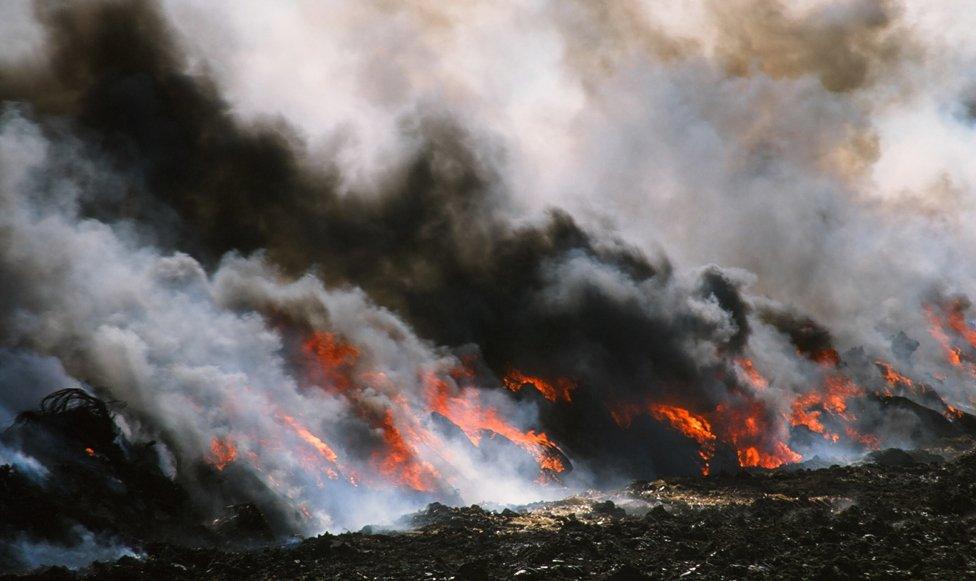
Fifteen years ago foot-and-mouth disease led to the culling of millions of animals and the UK losing billions of pounds. Could it happen again?
Officially, there were 2,000 cases of foot-and-mouth in the 2001 UK outbreak. But that doesn't do justice to the horrendous toll of the disease.
Each of those cases meant a farm having all of its livestock killed and burned. By the time the last case was confirmed at Whygill Head Farm in Appleby, Cumbria, on 30 September 2001, more than six million sheep, cattle and pigs had been slaughtered.
The first case to be discovered was at an abattoir in Essex in February 2001. Cases were discovered in Devon, Northumberland and North Wales in the first week, and the first mass slaughter was held to try and contain the virus. But by the second week further cases were confirmed in Cornwall and Scotland.
The culling policy saw not just the animals on the affected farm killed, but also all the animals in the surrounding area. Exclusion zones made travel in some areas almost impossible and tourism nose-dived. Despite these measures the epidemic continued.
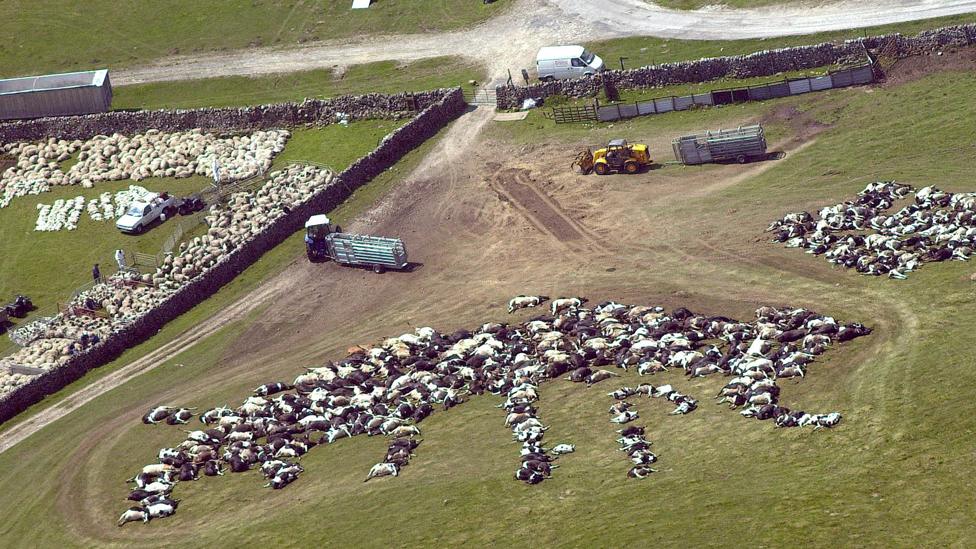
Thousands of dead cattle and sheep on Malham Moor
The virus causes painful blisters inside the mouth and under the hooves, and can cause lameness and problems feeding. Rarely affecting humans, it could however kill young animals. Its sheer infectiousness prompted the massive cull.
TV screens were filled with images of giant bonfires of carcasses and soldiers digging mass graves. Overseas visitors to the UK dropped by 10%.
It's still a sad memory for the farmers involved. Philip Heard lost 3,000 cows, ewes and lambs.
"We were all preparing to put our livestock out to grass but with foot-and-mouth we suddenly weren't allowed to move them and we couldn't get extra feed without a special licence.
Foot-and-mouth disease caused widespread disruption throughout the UK in 2001.
"It was a horrible thing to see our animals culled. We worked so hard to bring these animals into the world, it went against everything we worked for to see them killed."
It took nine months to bring foot-and-mouth under control, costing the UK's public sector £3bn, external and the private sector £5bn.
Amid the great public outcry the government promised lessons would be learned.
Despite not being discovered first, the first farm to suffer an outbreak was at Burnside Farm at Heddon-on-the-Wall, Northumberland.
Pig farmer Bobby Waugh was later banned from keeping farm animals for 15 years after being convicted of several offences. It was claimed he frequently fed his animals untreated catering waste from restaurants and local schools.
But the source of the virus remains a mystery.
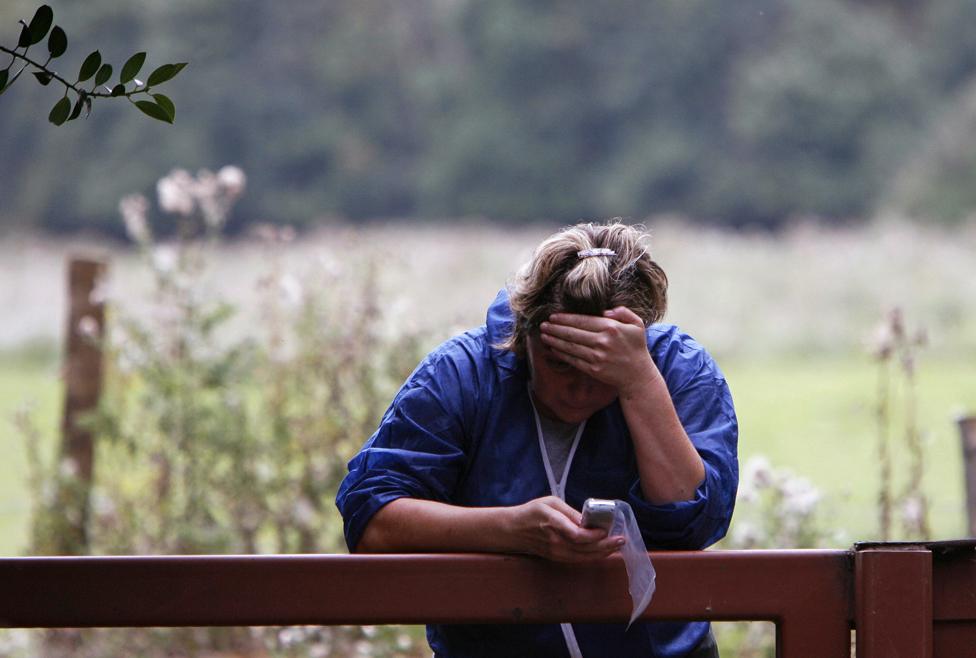
A Defra vet at work during the 2007 outbreak of foot and mouth disease
It was impossible to trace exactly, external how it arrived in the UK. It was theorised that it probably came from somewhere in Asia and travelled to the UK via South Africa in either catering waste or illegally imported meat.
British authorities made some immediate reforms after the devastation to try and stop the virus coming back. There was a ban on feeding animals with any catering waste, external or kitchen scraps. The virus can survive on even partially cooked meats for months.
The government agency Defra increased its monitoring of disease outbreaks around the world and the risks they posed to Britain. Today it works with the UK Border Agency advising on border controls.
However, illegally imported meat does still get through the net, with 95% of the risk coming from meat carried in personal luggage, external.
John Blackwell, of the British Veterinary Association, says although the risk is low, it's impossible to rule out a return of food-and-mouth from abroad.
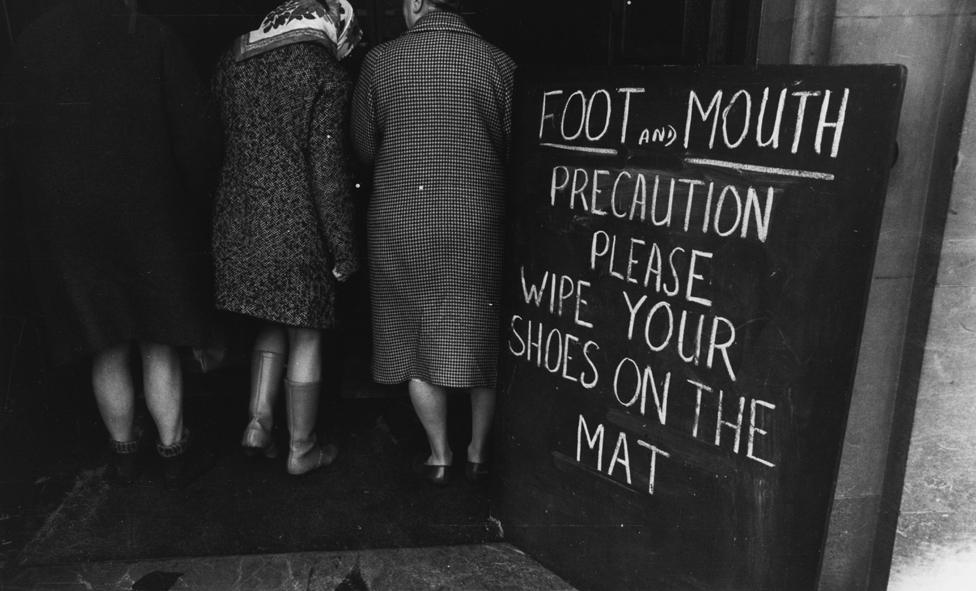
"We know it's running rife in Turkey and with international travel its always a risk despite high surveillance," he says. "There are strict import controls but you can't stop someone bringing back a ham sandwich from an exotic holiday and tossing it out the window."
Heard thinks border controls could be tighter. "There are so many people coming through on planes from around the world today and they can carry diseases in on their feet. We should have better [bio]security in airports," he says.
Before 2001, foot-and-mouth had last been seen in the UK in 1967. But the policies that came in failed to keep pace with changes in farming. Animals now moved far greater distances before ending up as meat in the shops, which allowed the virus to spread rapidly.

The virus
The virus can survive for a long time, external in fresh or partially cooked meat. It can also survive pasteurisation in milk
It can be spread on contaminated clothing, where it is able to survive for up to two weeks
There are seven "types", external of the virus. Type O is the most common and was responsible for the 2001 and 2007 outbreaks
Each "type" requires a specific vaccine strain to provide immunity

But an outbreak in 2007 showed this lesson had been learnt. A case was confirmed in cattle on a Surrey farm. It was traced to a faulty drainage pipe, external at a nearby research facility where the virus was being used in the manufacture of animal vaccines.
The scare provoked an immediate robust response. Susceptible animals on the affected farms were culled two days after the strain was discovered and protection zones of 3km and surveillance zones of 10km were set up in accordance with new European policies. Although a second outbreak popped up 30 miles from the original site there were only eight confirmed cases overall.
"Foot-and-mouth disease changed the way we farmed," says Catherine McLaughlin from the National Farmer's Union.
"We now have identification and tracing systems for our animals, rehearsed contingency plans and technological advances in disease control. All of these reduce the risk and impact of disease and make us stronger and more resilient."
Local and national exercises are held to test government's contingency plans for foot-and-mouth. The largest national one was Exercise Silver Birch in 2010, external.

The government also introduced a six-day standstill, external policy to help prevent the spread of diseases. If any new cattle, sheep or goats are brought on to a farm, none can leave for six days. For pigs the standstill is 20 days. However, some farmers have complained that this measure is too extreme, external.
"There is a lot more paperwork now," Heard says. "If you rent a piece of ground further afield its difficult to transfer the livestock, you need different licences depending on the distances.
"With the standstill you can miss out of specialist sales which are on at certain times of the year. If I want to sell ewe lambs on a Friday it means I can't buy livestock I need the Tuesday before."
Farmers and vets today aren't just on the lookout for foot-and-mouth but a range of exotic diseases, including swine fever in pigs and bluetongue in sheep.
"They're always on the radar of farm vets. Every farm vet will know what to do if they have an animal with a high temperature, drooling, lame and ulcers in the mouth," Blackwell says.
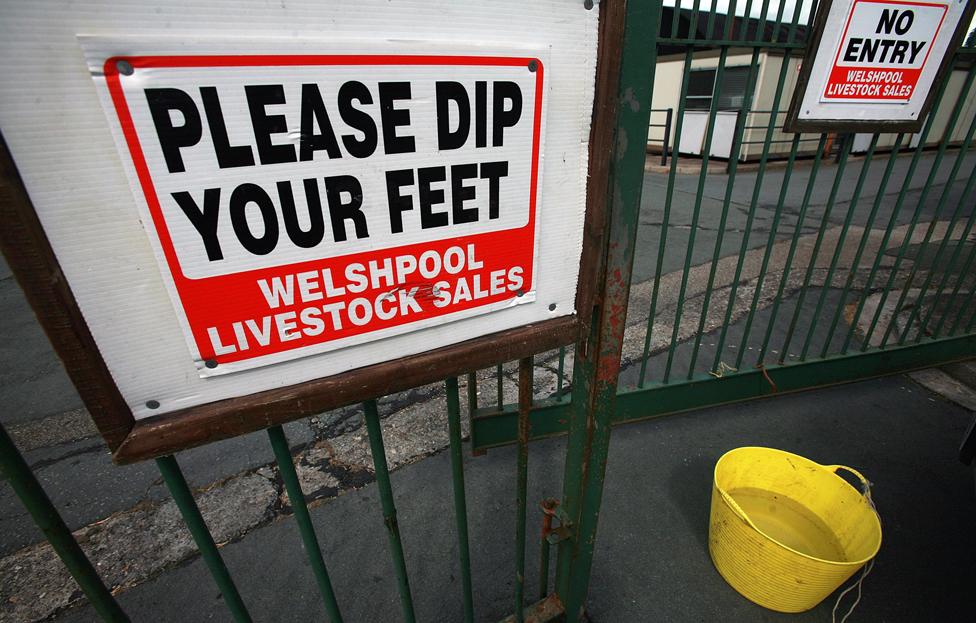
They are known as "notifiable diseases". Anyone who spots a suspected case is legally obliged to inform, external the relevant authorities immediately. This was what went wrong at Heddon-on-the-Wall in 2001, although Waugh denied knowing the disease was present.
According to Andrew Tyler from the campaigning group Animal Aid, external, the farming community is ignoring underlining problems with the industry.
"Every time there is an outbreak people want to find a specific cause," he says. "But they are ignoring the underlying problem of intensification in farming. It's often minimum input for maximum output and this puts the animals under more stress. It means livestock are more susceptible to disease."
The way the disease should be tackled remains controversial. There was much argument about the merits of vaccination in 2001 and the government refuses to rule it in or out, external if there was a future outbreak.
That debate will come back to life should the virus ever return.
Subscribe to the BBC News Magazine's email newsletter to get articles sent to your inbox.